Fortinet NSE5_FMG-7.2 Fortinet NSE 5 - FortiManager 7.2 Exam Practice Test
Fortinet NSE 5 - FortiManager 7.2 Questions and Answers
When an installation is performed from FortiManager, what is the recovery logic used between FortiManager and FortiGate for an FGFM tunnel?
An administrator has assigned a global policy package to a new ADOM called ADOM1. What will happen if the administrator tries to create a new policy package in ADOM1?
View the following exhibit.
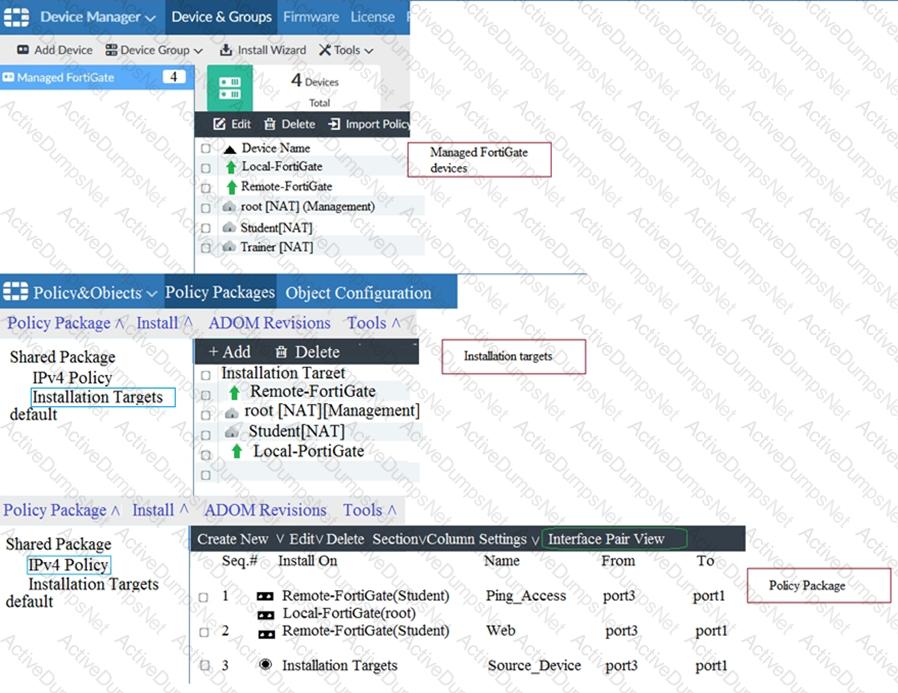
Given the configurations shown in the exhibit, what can you conclude from the installation targets in the Install On column?
Refer to the exhibit.

Which two statements about the output are true? (Choose two.)
In addition to the default ADOMs, an administrator has created a new ADOM named Training for FortiGate devices. The administrator sent a device registration to FortiManager from a remote FortiGate. Which one of the following statements is true?
An administrator, Trainer, who is assigned the Super_User profile, is trying to approve a workflow session that was submitted by another administrator, Student. However, Trainer is unable to approve the workflow session.
What can prevent an admin account that has Super_User rights over the device from approving a workflow session?

Which configuration setting for FortiGate is part of a device-level database on FortiManager?
Refer to the following exhibit:

Which of the following statements are true based on this configuration? (Choose two.)
You are moving managed FortiGate devices from one ADOM to a new ADOM.
Which statement correctly describes the expected result?
Refer to the exhibits.
Exhibit one.
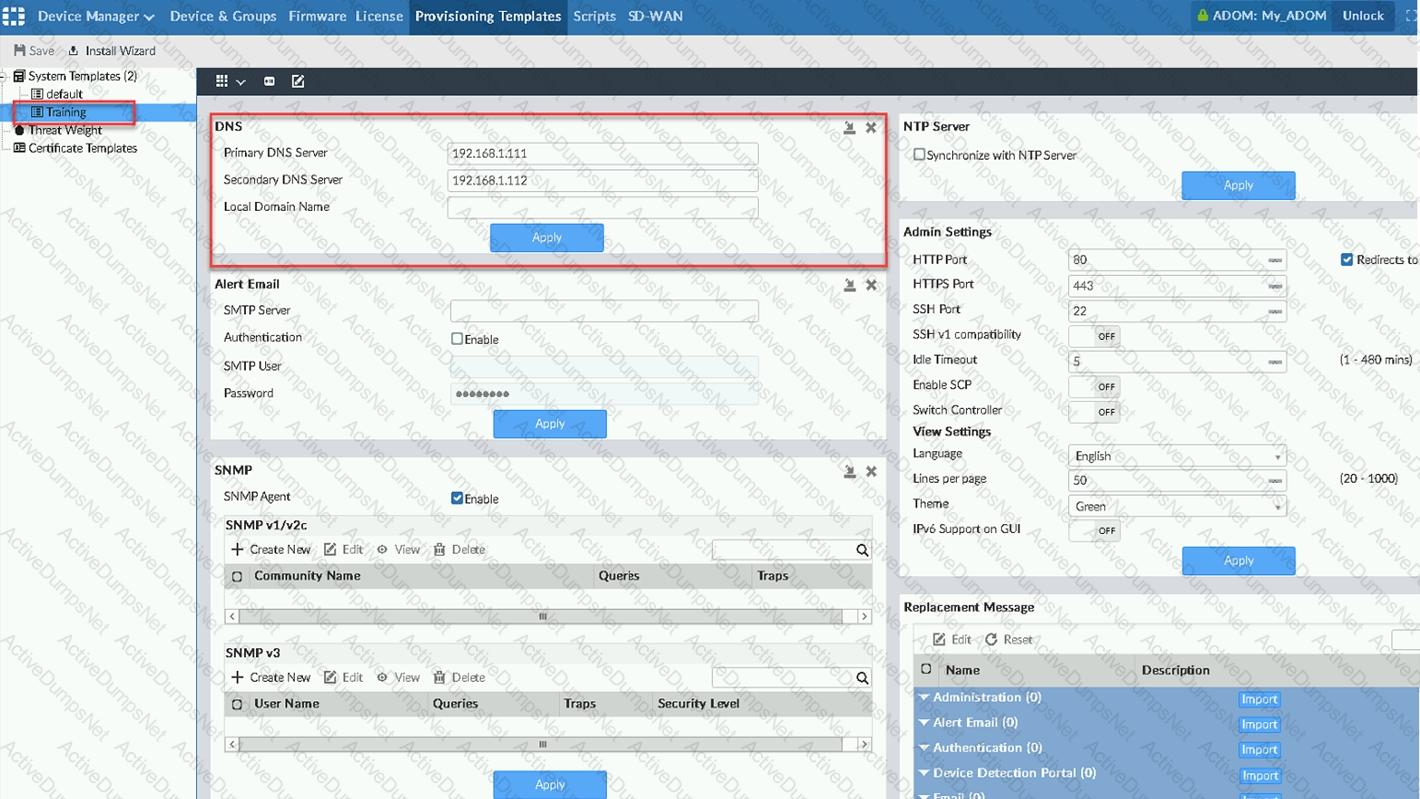
Exhibit two.
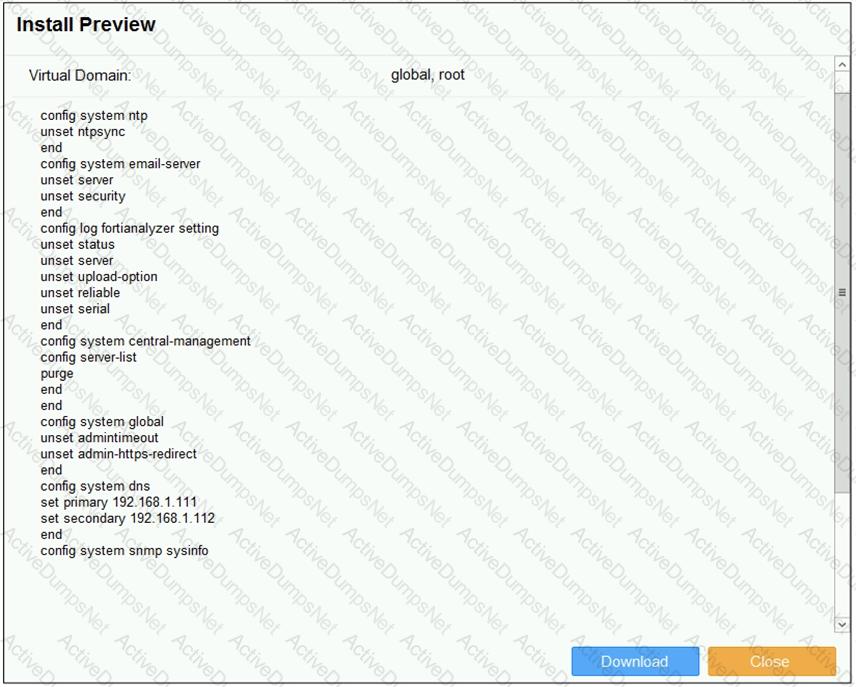
An administrator created a new system template named Training with two new DNS addresses on FortiManager. During the installation preview stage, the administrator notices that many unset commands need to be pushed.
What can be the main reason for these unset commands?
Which of the following statements are true regarding VPN Gateway configuration in VPN Manager? (Choose two.)
In the event that one of the secondary FortiManager devices fails, which action must be performed to return the FortiManager HA manual mode to a working state?
Refer to the exhibit.
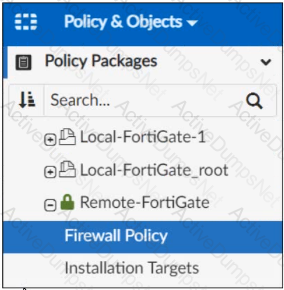
Given the configuration shown in the exhibit, which two statements are true? (Choose two.)
Exhibit.

Which two statements about the output are true'' (Choose two.)
Which configuration setting for FortiGate is part of an ADOM-level database on FortiManager?
View the following exhibit.
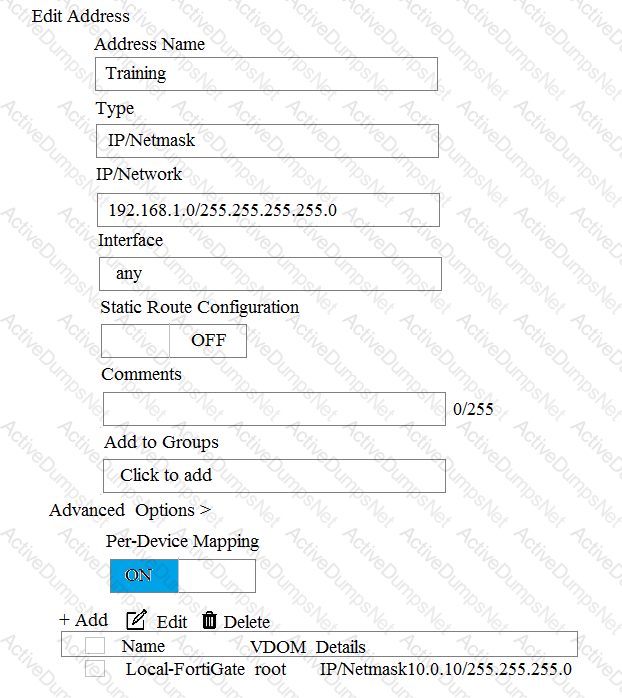
An administrator has created a firewall address object, Training, which is used in the Local-FortiGate policy package. When the install operation is performed, which IP Netmask will be installed on the Local-FortiGate, for the Training firewall address object?
An administrator would like to create an SD-WAN using central management. What steps does the
administrator need to perform to create an SD-WAN using central management?
Which two conditions trigger FortiManager to create a new revision history? (Choose two.)
An administrator has enabled Service Access on FortiManager. What is the purpose of Service Access on the FortiManager interface?
View the following exhibit:
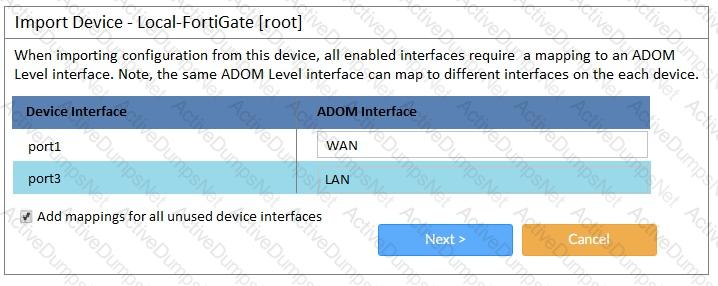
An administrator used the value shown in the exhibit when importing a Local-FortiGate into FortiManager. What name will be used to display the firewall policy for port1?
What will be the result of reverting to a previous revision version in the revision history?
Which two items are included in the FortiManager backup? (Choose two.)
An administrator is replacing a device on FortiManager by running the following command:
execute device replace sn
What device name and serial number must the administrator use?
What does a policy package status of Conflict indicate?
An administrator configures a new firewall policy on FortiManager and has not yet pushed the changes to the
managed FortiGate.
In which database will the configuration be saved?
Which two statements regarding device management on FortiManager are true? (Choose two.)
Refer to the exhibit.

Given the configuration shown in the exhibit, which two statements are true? (Choose two.)
Refer to the exhibit.
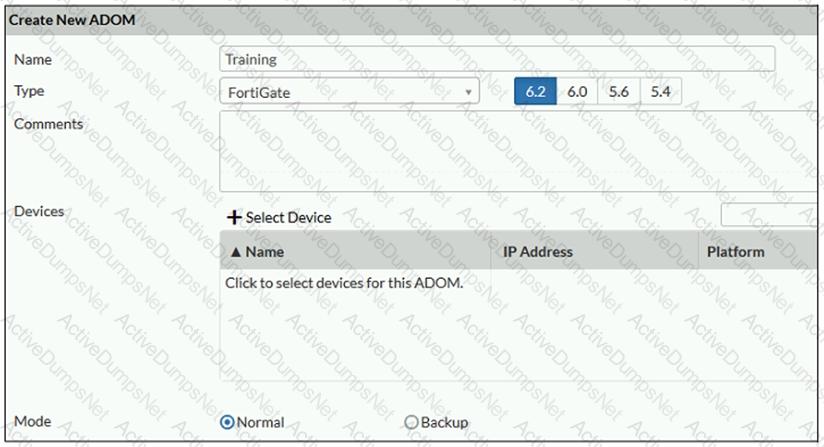
Which two statements about an ADOM set in Normal mode on FortiManager are true? (Choose two.)
Refer to the exhibit.
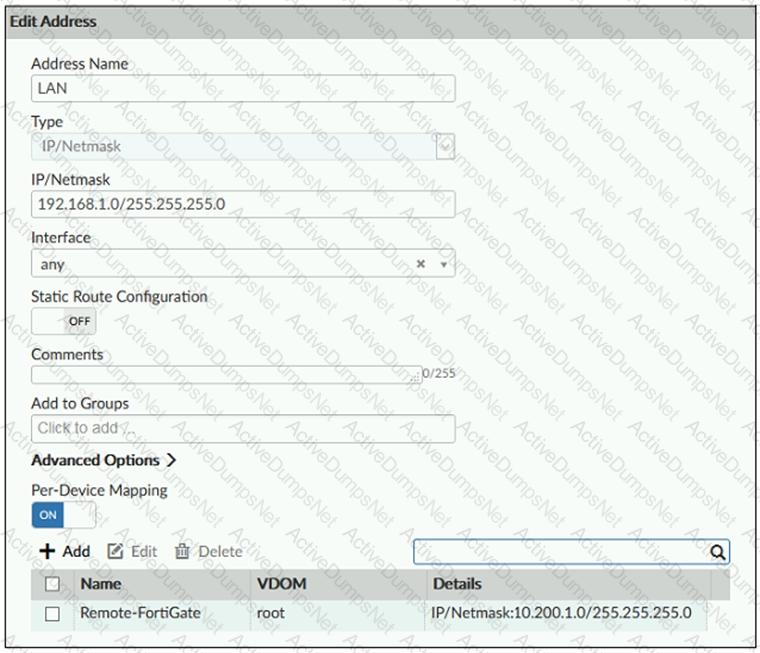
An administrator has created a firewall address object, Training which is used in the Local-FortiGate policy package.
When the installation operation is performed, which IP/Netmask will be installed on the Local-FortiGate, for the Training firewall address object?
Refer to the exhibit.
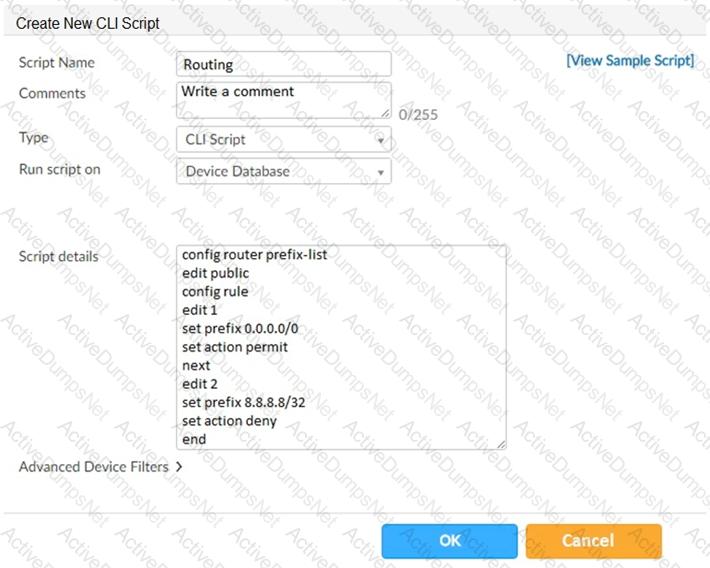
Which two statements are true if the script is executed using the Device Database option? (Choose two.)
